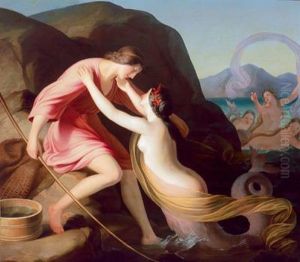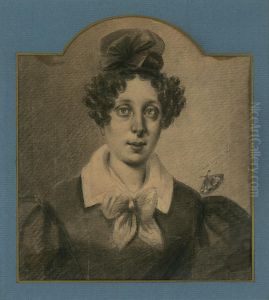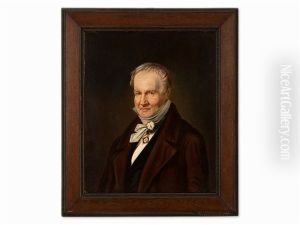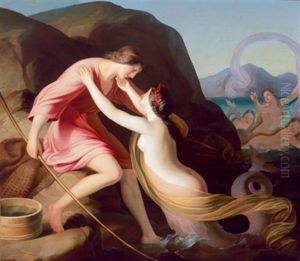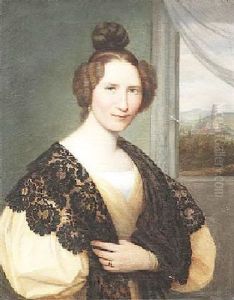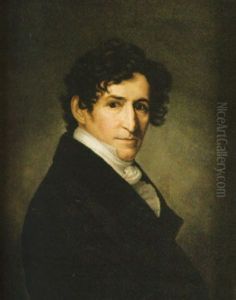Karl Begas Paintings
Karl Begas was a prominent German painter and significant representative of the Biedermeier period, an era in Central Europe between 1815 and 1848, which emphasized a return to traditional values and domesticity after the tumultuous Napoleonic Wars. Begas was born on September 30, 1794, in Heinsberg near Cologne, Germany. He belonged to a family with a strong artistic lineage, which included several painters and sculptors who were active over multiple generations.
Begas showed an early aptitude for art and began his formal training in 1812 at the Düsseldorf Academy of Arts under the directorship of Peter von Cornelius, a leading figure in German Romantic and Nazarene painting. Begas's early work was influenced by the Nazarene movement, which sought to revive the spirit and techniques of medieval and early Renaissance art.
In 1816, Begas traveled to Italy, which was a customary part of an artist's education at the time. There, he continued his studies and was particularly influenced by the art of the Italian Renaissance. Upon his return to Germany in 1821, he settled in Berlin, where he became one of the most sought-after portraitists of his time. His work appealed to the Prussian court and the emerging bourgeoisie, who appreciated his ability to blend the grandeur of earlier styles with contemporary sensibilities.
Begas's portraits are characterized by their fine detail, rich color, and psychological depth. He was adept at capturing the character and status of his subjects, often through the use of allegorical elements. His success as a portraitist led to numerous commissions from the Prussian royal family, and he became a favorite painter of King Friedrich Wilhelm III.
In addition to portraiture, Begas also created historical and mythological paintings, demonstrating a versatility in subject matter. His historical works often reflected a romanticized view of the past, a common theme in Biedermeier art, which sought to escape the uncertainties of the present by idealizing earlier periods.
Karl Begas passed away on November 24, 1854, in Berlin. His legacy continued through his children, several of whom became notable artists in their own right. His son Oskar Begas, for example, became a well-known portrait painter, and another son, Reinhold Begas, achieved fame as a sculptor. The Begas family contributed significantly to the arts in Germany throughout the 19th century, and Karl Begas's works remain a testament to the skill and cultural influence of this artistic dynasty.

